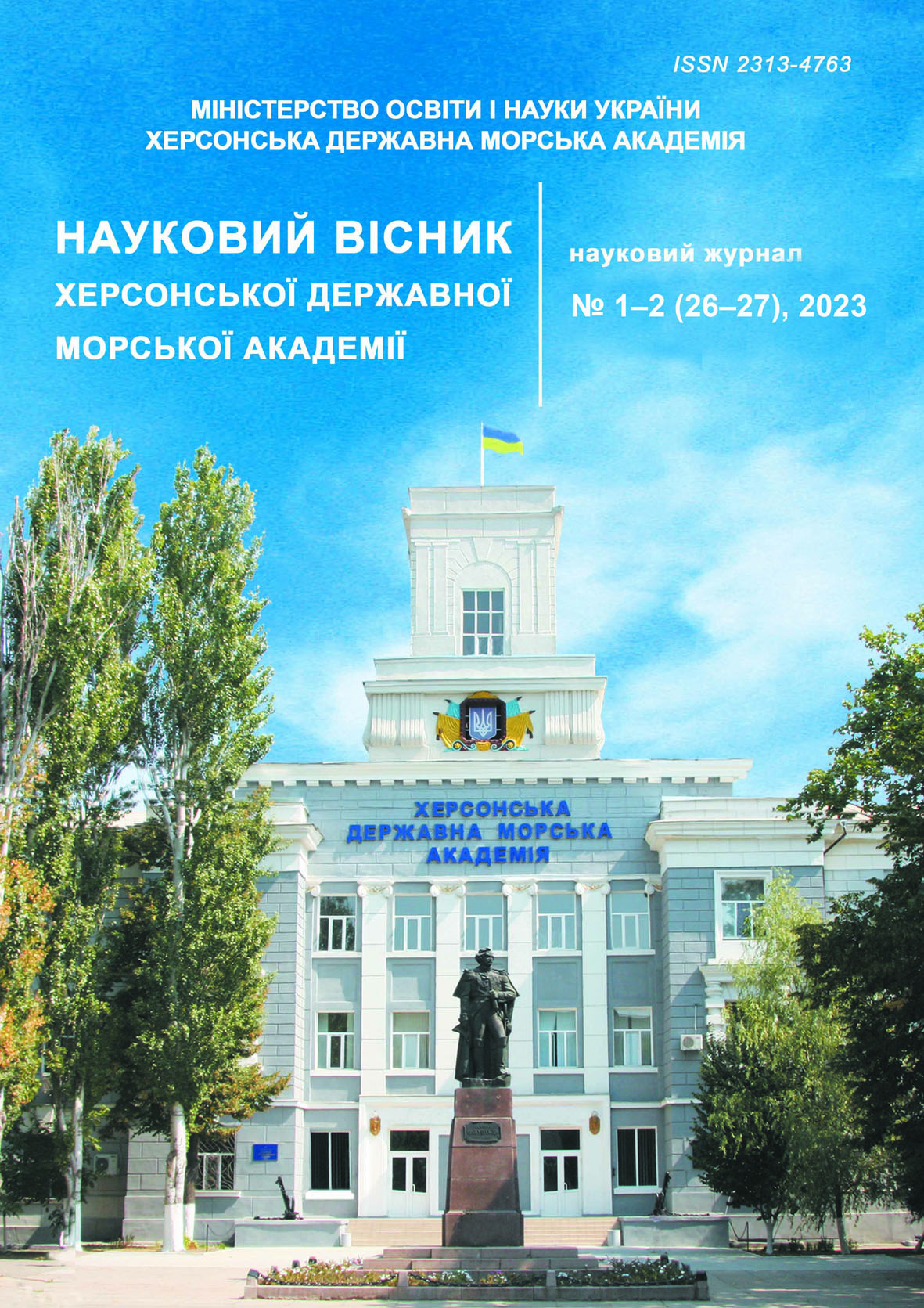DEVELOPMENT OF BASIC APPROACHES TO ORGANIZING SOFTWARE FOR AUTONOMOUS UNDERWATER VEHICLES FOR SOLVING SURVEY TASKS
https://doi.org/10.33815/2313-4763.2023.1-2.26-27.017-028
Abstract
The aim of the article is to enhance the efficiency of surveying the ocean depths and performing various underwater operations by utilizing advanced mathematical frameworks in autonomous underwater vehicles. The article discusses the challenges in developing a control system for autonomous underwater vehicles, noting that existing control systems are primarily designed for search-based tasks, while these vehicles can be used for more complex operations such as surveying. To successfully address these tasks, autonomous underwater vehicles require a flexible control system capable of adapting to new tasks and data from onboard sensors. The article proposes a new architecture for the mathematical framework of the control system, integrating both hierarchical and behavioral control structures. This significantly expands the capabilities of these vehicles, enabling them to tackle diverse tasks within the constraints of computational resources onboard. Within this proposed architecture, a behavioral approach is employed across different functional hierarchical levels of the control system. Notably, executive-level control structures maintain a constant composition, while variable structures are formed at the tactical level based on a developed library of agents, allowing for easy functionality expansion as new tasks and hardware emerge. The article justifies an approach for constructing a library of tactical-level agents based on the functional decomposition of the target task class. The actions of the agents forming the library are established, providing the groundwork for creating declarative missions. Furthermore, a researched agent structure containing a local environmental model, action planning tools based on this model, and an analysis of utilized information to determine agent operability is developed and investigated. This developed control system structure could be further proposed for testing on autonomous underwater vehicles.
References
2. Cashmore, M., Fox, M., Long, D., Magazzeni, D., Ridder, B., Carrera, A., Palomeras, N., Hurtos, N., Carreras, M. (2015). Rosplan: Planning in the robot operating system. In: Proceedings of the international conference on automated planning and scheduling. vol 25, pp 333–341.
3. Kirchner, F., Straube, S., Kühn, D., Hoyer, N. (2020). AI technology for underwater robots. Springer, Cham, CH; https://doi.org/10.1007/978-3-030-30683-0.
4. Christensen, L., de Gea Fernández, J., Hildebrandt, M. et al. (2022). Recent Advances in AI for Navigation and Control of Underwater Robots. Curr Robot Rep 3, p. 165–175.
5. Zhandong Li, Jianguo Tao, Hao Sun, Yang Luo, Liang Ding, Zongquan Deng (2017). Hydrodynamic calculation and analysis of a complex-shaped underwater robot based on computational fluid dynamic sand prototype test Advances in Mechanical Engineering, Vol. 9(11), pp. 1–10.
6. Zhimin Liu, Xiaozhong Zhou (2019). Hydrodynamic Analysis and Structural Optimization of an Underwater Robot October 2019 IOP Conference Series Materials Science and Engineering 649(1):012017 DOI: 10.1088/1757-899X/649/1/012017.
7. Thompson, F., Guihen, D. (2019). Review of mission planning for autonomous marine vehicle fleets. Journal of Field Robotics. 36(2): 33–54. https://doi.org/10.1002/rob.21819/.
8. Panda, M., Das, B., Subudhi, B., Pati, BB. (2020). A comprehensive reviewof path planning algorithms for autonomous underwater vehicles. Int J Autom Comput. 17(3). p. 321–352.
9. Li, D. L., Wang, P., Du, L. (2019). Path planning technologies for autonomous underwater vehicles-a review. IEEE Access, vol. 7, pp. 9745–9768. DOI: 10.1109/ACCESS.2018. 2888617.
10. Ali Jebelli, Mustapha, C. E. Yagoub, R.H.J. Abdul Rahim, H. (2013). Kazemi Design and construction of an underwater robot based fuzzy logic controller January 2013 International Review of Mechanical Engineering (IREME) 7(1):147–153.
11. Ali Jebelli, M.C.E. Yagoub, B. S. (2016). Dhillon Design and Control of Underwater Robots with Rotating Thrusters international Journal of Robotics and Automation (IJRA) Vol. 5, No. 4, December, pp. 284−294.
12. Moniruzzaman, M., Islam SMS, Bennamoun, M., Lavery P. (2017). Deep learning on underwater marine object detection: a survey. In: International conference on advanced concepts for intelligentvision systems. Springer; pp 150–160.
13. Roehr TM, Kirchner, F. (2016). Spatiotemporal planning for a reconfigurable multi-robot system. In: Finzi A, Karpas E, editors. Proceedings of the 4th workshop on planning and robotics (PlanRob). London; pp. 135–146.
14. Yuan, J., Wang, H., Zhang, H., Lin, C., Yu, D., Li, C. (2021). AUV obstacle avoidance planning based on deep reinforcement learning. Journal of Marine Science and Engineering. 9(11): 1166. https://doi.org/10.3390/jmse9111166.
15. Guo, T., Jiang, N., Li, B. Y. (2021). UAV navigation in high dynamic environments: A deep reinforcement learning approach. Chin. J. Aeronaut. 34, 479–489. https://doi.org/10.1016/j.cja.2020.05.011.
16. Antonelli, G. (2018). Underwater robots. Springer Tracts in Advanced Robotics, vol. 123. Springer International Publishing, Cham. https://doi.org/10.1007/978-3-319-77899-0.






